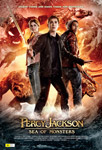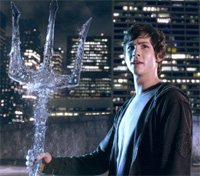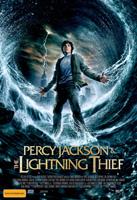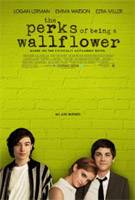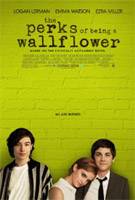Logan Lerman Indignation
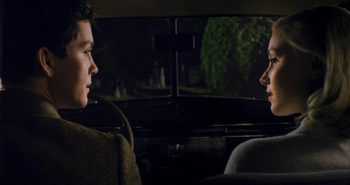
Logan Lerman Indignation
Cast: Logan Lerman, Sarah Gadon, Tracy Letts, Linda Emond, Danny Burstein, Ben Rosenfield
Director: James Schamus
Genre: Drama
Running Time: 110 minutes
Synopsis: In 1951, the Korean War, now in its second year, hangs heavy over Newark, New Jersey. Marcus Messner (Logan Lerman) attends the funeral of his classmate Jonah Greenberg, the most recent victim of the conflict. For his community and family, Marcus has been chosen to avoid the dangers of the draft and the pitfalls of his working-class background by being, as Mrs. Greenberg exclaims, 'such a clever boy." With a scholarship from his temple to attend Winesburg College, Marcus will soon say goodbye to Newark and his family's kosher butcher shop in which his father Max (Danny Burstein) and his mother Esther (Linda Emond) work. While he is loath to admit it, Marcus also looks forward to escaping his father's nearly obsessive worrying over his safety and fate.
Among the manicured lawns and leafy paths of Winesburg College, Marcus takes his role as student quite seriously. While not unfriendly, he is uninterested in the social lives of his two roommates, the artistically effusive Betram Flusser (Ben Rosenfield) and buttoned-down Ron Foxman (Philip Ettinger), the two other Jewish men in the dorms. Nor does Marcus have any interest in joining Winesburg's one Jewish fraternity Zeta Tau Mu, even after its president, the charismatic Sonny Cottler (Pico Alexander), and his acolyte Marty Ziegler (Noah Robbins) make a personal call to recruit him. With his academic pursuits and his library job filling his days, he has time for little else, especially such unfair obligations as the college's mandatory weekly Wednesday chapel, which Marcus, as a precocious freethinker, resents.
But Marcus' best-laid plans become rearranged when he encounters Olivia Hutton (Sarah Gadon) one evening in the library. Marcus asks her out, borrowing his roommate's prized 1939 LaSalle Touring Sedan to take her to the town's one fancy French restaurant, L'Escargot. Charmed by Marcus' messy mix of academic seriousness and social naiveté, Olivia has him make a detour on the way home. There in the car, Olivia provides the kind of sexual favor Marcus never imagined he would ever receive. Bewildered by her actions, Marcus first attempts to elude dealing with what happened by avoiding Olivia herself. But when she confronts him and refuses to be shamed, her forthrightness makes her all the more appealing, even if she now wants nothing to do with him.
As his obsession deepens, Marcus goes into an emotional tailspin, fighting with his roommates, avoiding news from home about his father's growing irrational behavior, and becoming indignant at the college's expectations of him. After a fight with his roommates, Marcus moves into a dilapidated single room, a change that necessitates a tête-à-tête with Dean Caudwell (Tracy Letts), Winesburg's Dean of Men. Confronted with an authority figure who embodies the rules and traditions which Marcus has grown to hate, he angrily argues with Dean Caudwell, laying out a case for the ways in which the school, his fellow students, and the dean have unfairly imposed social and religious obligations on him. The fury of his argument, however, may ultimately have had more to do with Marcus' sudden bout of appendicitis in Dean Caudwell's office than with his growing indignation.
As he recovers at a nearby hospital, Marcus reframes his vision of the future. Olivia visits him, bringing him a bouquet of roses, and his love for her deepens. His brief happiness, however, is short lived. After learning of Olivia's scandalous reputation among his fellow students, Marcus must deal with his mother's own disapproval. Esther comes to visit him, and demands a pact with her son: she will stay with her husband, whose increasingly irrational behavior has become an unbearable burden for her, if Marcus leaves Olivia. Reluctantly agreeing to his mother's terms, Marcus finds when he returns to college that Olivia has vanished without a trace or explanation. Even though he tries to regain his academic direction and determination, Marcus finds himself haunted by Olivia's disappearance, and ultimately subsumed by decisions he seems to have no control over. In the end, Marcus experiences an eternal yearning to reach out to and connect with all those who may have, however briefly, loved him and inspired his love in return, even if, in the moment, he could barely understand love's power.
Indignation
Release Date: August 18th, 2016
Director: James Schamus
Genre: Drama
Running Time: 110 minutes
Synopsis: In 1951, the Korean War, now in its second year, hangs heavy over Newark, New Jersey. Marcus Messner (Logan Lerman) attends the funeral of his classmate Jonah Greenberg, the most recent victim of the conflict. For his community and family, Marcus has been chosen to avoid the dangers of the draft and the pitfalls of his working-class background by being, as Mrs. Greenberg exclaims, 'such a clever boy." With a scholarship from his temple to attend Winesburg College, Marcus will soon say goodbye to Newark and his family's kosher butcher shop in which his father Max (Danny Burstein) and his mother Esther (Linda Emond) work. While he is loath to admit it, Marcus also looks forward to escaping his father's nearly obsessive worrying over his safety and fate.
Among the manicured lawns and leafy paths of Winesburg College, Marcus takes his role as student quite seriously. While not unfriendly, he is uninterested in the social lives of his two roommates, the artistically effusive Betram Flusser (Ben Rosenfield) and buttoned-down Ron Foxman (Philip Ettinger), the two other Jewish men in the dorms. Nor does Marcus have any interest in joining Winesburg's one Jewish fraternity Zeta Tau Mu, even after its president, the charismatic Sonny Cottler (Pico Alexander), and his acolyte Marty Ziegler (Noah Robbins) make a personal call to recruit him. With his academic pursuits and his library job filling his days, he has time for little else, especially such unfair obligations as the college's mandatory weekly Wednesday chapel, which Marcus, as a precocious freethinker, resents.
But Marcus' best-laid plans become rearranged when he encounters Olivia Hutton (Sarah Gadon) one evening in the library. Marcus asks her out, borrowing his roommate's prized 1939 LaSalle Touring Sedan to take her to the town's one fancy French restaurant, L'Escargot. Charmed by Marcus' messy mix of academic seriousness and social naiveté, Olivia has him make a detour on the way home. There in the car, Olivia provides the kind of sexual favor Marcus never imagined he would ever receive. Bewildered by her actions, Marcus first attempts to elude dealing with what happened by avoiding Olivia herself. But when she confronts him and refuses to be shamed, her forthrightness makes her all the more appealing, even if she now wants nothing to do with him.
As his obsession deepens, Marcus goes into an emotional tailspin, fighting with his roommates, avoiding news from home about his father's growing irrational behavior, and becoming indignant at the college's expectations of him. After a fight with his roommates, Marcus moves into a dilapidated single room, a change that necessitates a tête-à-tête with Dean Caudwell (Tracy Letts), Winesburg's Dean of Men. Confronted with an authority figure who embodies the rules and traditions which Marcus has grown to hate, he angrily argues with Dean Caudwell, laying out a case for the ways in which the school, his fellow students, and the dean have unfairly imposed social and religious obligations on him. The fury of his argument, however, may ultimately have had more to do with Marcus' sudden bout of appendicitis in Dean Caudwell's office than with his growing indignation.
As he recovers at a nearby hospital, Marcus reframes his vision of the future. Olivia visits him, bringing him a bouquet of roses, and his love for her deepens. His brief happiness, however, is short lived. After learning of Olivia's scandalous reputation among his fellow students, Marcus must deal with his mother's own disapproval. Esther comes to visit him, and demands a pact with her son: she will stay with her husband, whose increasingly irrational behavior has become an unbearable burden for her, if Marcus leaves Olivia. Reluctantly agreeing to his mother's terms, Marcus finds when he returns to college that Olivia has vanished without a trace or explanation. Even though he tries to regain his academic direction and determination, Marcus finds himself haunted by Olivia's disappearance, and ultimately subsumed by decisions he seems to have no control over. In the end, Marcus experiences an eternal yearning to reach out to and connect with all those who may have, however briefly, loved him and inspired his love in return, even if, in the moment, he could barely understand love's power.
Indignation
Release Date: August 18th, 2016
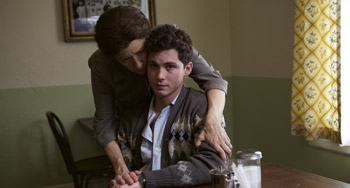 About The Production
About The Production
A Director 25 Years in the Making For the last 25 years, James Schamus' name has been synonymous with smart, groundbreaking and successful films. As co-founder of Good Machine, CEO of Focus Features, and an independent producer and screenwriter, James Schamus has been creatively involved in dozens of the most critically acclaimed films of recent time. In the process, he's had his hand in virtually every aspect of the filmmaking process, even getting an Academy Award nomination for Original Song for Crouching Tiger, Hidden Dragon. With Indignation, James Schamus adds feature film director to his resume.
James Schamus worked on the screenplay for Indignation during his last years at Focus Features, but hadn't seriously considered directing it. 'You write a screenplay, and you have a choice," explains James Schamus, 'You could direct it, or Ang Lee could direct it. That's not much of a choice." But when his tenure at Focus ended, James Schamus began to seriously entertain the possibility of directing Indignation himself. 'Finally having the time and the freedom, untethered from my other jobs," James Schamus jokes, 'I considered whether or not this is an experience I'd like to inflict on my friends and relatives." And Indignation was the perfect project for him for a variety of reasons. Not only had he envisioned every scene and sounded out every line in writing the screenplay, but he connected to the story personally. 'To a certain extent, I know Marcus Messner, the character [in Indignation] very well," acknowledges James Schamus. 'There's a little of him in me. There's a little of him in any good Jewish boy who went on to try to do well in school."
To get started, James Schamus approached Anthony Bregman, a producer with whom he'd worked both at Good Machine and Focus Features, about coming on board. James Schamus' screenplay struck a chord with Anthony Bregman as well. 'I felt like here was something that could have been taken from my own life," remembers Anthony Bregman. 'And that's the kind of connection I always look for in a script." James Schamus' adaptation 'touched on so many aspects of what I felt as a young person and how I approach the world today," explains Anthony Bregman. 'It's a tragic love story. It's a story of youthful rebellion. It's a grand philosophical story of existence about the things we do that determine our fate. It's a moving story, a funny story and a very profound one."
Philip Roth, Allen Ginsburg, Sylvia Plath
And how Death is that remedy all singers dream of, sing, remember, prophesy as in the Hebrew Anthem, or the Buddhist Book of Answers"and my own imagination of a withered leaf"at dawn" Dreaming back thru life, Your time"and mine accelerating toward Apocalypse… Allen Ginsberg, 'Kaddish"
I love people. Everybody. I love them, I think, as a stamp collector loves his collection. Every story, every incident, every bit of conversation is raw material for me. My love's not impersonal yet not wholly subjective either. I would love to be everyone, a cripple, a dying man, a whore, and then come back to write about my thoughts, my emotions, as that person. But I am not omniscient. I have to live my life, and it's the only one I'll ever have.
Sylvia Plath, The Journals of Sylvia Plath (July 1950 – July 1953)
In 2008, Philip Roth published his 29th novel, Indignation, a story that returned him to his own youth, growing up in Newark before attending a small liberal arts college. One of America's most honored and accomplished writers––having twice won the National Book Award and the National Book Critics Circle award, as well as having received a Pulitzer Prize––Roth was 75 years old when he turned back to imagine this period of his youth. 'Indignation may not be the best known of Philip Roth's novels, but in some ways that's a real blessing," notes writer/director James Schamus. 'It's more of a chamber piece that captures a specific moment in a young man's life." While details of the story roughly mirror Philip Roth's life, with Winesburg College serving as a stand in for Pennsylvania's Bucknell University, Roth's alma mater, the story isn't exactly autobiographical. But the world of ideas that Roth weaves together to create Indignation nevertheless feels very personal and profound. Connecting to the novel's reservoir of 'empathy and elegy," James Schamus found that in Indignation, Roth 'was reaching down into something that really resonated with me."
In adapting the book for the screen, James Schamus turned to two other literary figures of the late 20th century, Sylvia Plath and Allen Ginsberg, for inspiration. While both were contemporaries of Roth, neither one was directly connected to his intellectual circle. Ginsberg, 8 years Philip Roth's senior, was born in Roth's hometown of Newark, before his family moved to nearby Paterson. 'You don't think of Philip Roth and Allen Ginsberg as being from the same sphere," explains James Schamus, 'but both were very ambitious young Jewish kids from New Jersey from essentially working class or middle class backgrounds who found their path into American letters in different ways." Their paths did cross, however, in one unexpected way. Ginsberg's aunt, Hannah Litzky, who taught English at Weequahic High School, had Roth as a student in her class. While Allen Ginsberg's beat poetry and queer sensibility might seem out of place on Winesburg's staid campus, James Schamus found several ways to weave him into the story. For Schamus, the Kaddish sung at the film's beginning for the Jonah Greenberg is a nod to Ginsberg's 1961 elegy, 'Kaddish," dedicated to his mother, Naomi Ginsberg. And in the character of Bertram Flusser, one of Marcus's two roommates, one finds the embryonic spirit of the sexual revolution that Ginsberg would be instrumental in igniting in the next decade. 'Flusser's own heartbreak mirrors Marcus's," says James Schamus, 'and Marcus's blindness to it makes it all the more moving to me. I'd like to believe Flusser would, in the following years, discover Ginsberg and the Beat Poets, and find something of himself there."
Although Sylvia Plath and Philip Roth travelled in different circles, James Schamus imagines an aesthetic, if not actual, bond between the two. 'I don't know if Philip Roth was reading her journals, but for me the character Olivia Hutton has a lot to do with Sylvia Plath," suggests James Schamus. Since The Unabridged Journals of Sylvia Plath were first published in 2000, eight years before Roth published his novel Indignation, such a connection is not at all impossible. As James Schamus and Sarah Gadon developed the character of Olivia Hutton, the figure of Sylvia Plath helped illuminate the character's consciousness and the times in which she lived. 'The thing that I always loved about Sylvia Plath's writing as a young woman is that you're able to get into the head of the feminine psyche––how much strength there is but simultaneously, there is all this vulnerability," explains Gadon. 'They kind of coexist in this weird world of being objectified versus having your own strength of opinions, and I think you see all of that at play in Olivia." As James Schamus points out, the character of Olivia spent her freshman year at Mt. Holyoke College, just down the road from where Sylvia Plath was spending her freshman year at Smith College. 'Reading Sylvia Plath's journal entries about that year really helped me understand what Olivia might have been going through," says James Schamus, 'even if she's a completely different character."
Philip Roth's 1950s
To create Philip Roth's vision of 1951, the filmmakers needed to understand that world inside out. 'James is first and foremost a scholar and a university professor, so research is very important to him and is almost second nature," noted production designer Inbal Weinberg. 'He was very methodical and meticulous with period details, which in turn made us all look deeper at how people lived in the 1950s." In preproduction, the team created a massive historical archive detailing nearly every aspect of life in the film, from how people dressed to what a French cafe might have on its menu. 'For Winesburg College, we looked through many college archives and found period photographs of classrooms, quads and dorms (including Philip Roth's actual university, Bucknell)," recalls Weinberg. 'We purchased 1950s yearbooks and personal scrapbooks on eBay and used them as our bible. They provided us with not only an understanding of the social system, looks, and fashion, but also a reference for fonts and graphics to use in any college posters, pamphlets, and booklets we created." For Newark, the filmmakers turned both to Roth's own literary work and historical archives, recording and examining every detail, from the art of Kosher butchering to the price of meat at the time. 'The most lively debate was over the Shiva food spread," recalls Weinberg. 'I had to personally delve into the history of Jello and the difficult question of whether it was considered Kosher or not." (The final answer is, 'it depends." But the discovery of a Hebrew Jello ad from the time and discussion of Jello in Roth's Portnoy's Complaint provided enough evidence to vote for its inclusion on the table.)
Costume designer Amy Roth's extensive research into the wardrobes of both college kids and Newark's Jewish community gave her new insight into the history of fashion. Besides poring over old fashion magazines, from Seventeen to Bazaar, and archival images detailing the use of plaid and floral patterns, Philip Roth scoured vintage houses for costumes for both the boy and girl students. 'The girls wore skirts and blouses that button down the back. The boys were in button front shirts and ties and beautifully tailored jackets," recalls Philip Roth. 'The fashion of the time was very inspirational. Seeing things like detail and craftsmanship, I'm just amazed by how well everybody dressed." Philip Roth also sought to provide character and story with her costumes. Taking her cue from another Philip Roth story, Philip Roth dressed Logan Lerman in a way that showed off both his naiveté and will to succeed. 'When we see Logan for the first time as Marcus, standing on his college campus with his suitcase, he's a little overdressed," explains James Schamus. 'His bucks aren't fashionably kicked in. They are brand new and white and sticking out of his brand-new suit."
In addition to capturing the collegiate look at Winesburg, the production design and costumes had to bring 1950s Newark to life. 'It's not just the costumes that have an effect," explained Linda Emond, who plays Marcus' mother Esther. 'It's hair, makeup, and the sets we're working on, that definitely take you to another time." While Danny Burstein, who plays Marcus' dad, Max, did extensive research on his character through reading and visiting butcher shops, he also credits costume designer Amy Roth with transporting him to 1951. Burstein remembers thinking while on set, 'I feel like myself, then I look in the mirror, and I think, -Holy cow! Who the hell is that?' It was that transformative."
While much of the production team's extensive research can be seen overtly on screen, some of it shows up in more complex and subtle ways. When Olivia pens a letter to Marcus, for example, the shape of her script mimes that of Sylvia Plath's. On the other hand, Marcus's cursive line when writing Olivia imitates the scrawl of soldiers writing home from the Korean War. Even something so innocuous as a phonograph LP can underscore the complicated geo-political situation of the time. When Marcus' roommate Flusser puts on a record of Paul Robeson singing 'Chee Lai," he opens up a revolutionary can of worms. The song, also entitled 'The March of the Volunteers," was recorded in both English and Chinese by Robeson in 1941. Eight years later, it was adopted as the National Anthem of the People's Republic of China and would no doubt have been a rallying hymn sung by the Chinese forces on the other side of the Korean War. In fact the title of Philip Roth's novel, Indignation, comes from a contemporaneous translation of the song.
The Inner Lives of Fifties College Students
While the extensive look books and research dossiers for the film provided a guide to how things should look, the filmmakers pushed deeper to comprehend the era's psyche as well. 'There is a sense of uncertainty from a younger generation that has no real references to define itself vis-à-vis the prior generation and what's coming next," explains James Schamus. 'It was a real limbo time after World War II. The sexual revolution was yet to come, anti-communism and the Blacklist were in the news, and teenage culture as we know it was just around the corner. Meanwhile there's another massive war going overseas. Our characters are really struggling with how to find themselves in that landscape."
For the actors, comprehending their characters' inner psyches often meant exploring their intellectual lives as students. To help them get into the heads of 1951 college students, the filmmakers compiled course descriptions and syllabi used at Bucknell University (Roth's alma mater) and Mount Holyoke (Hutton's previous school). 'Marcus is so much smarter than I am," jokes Logan Lerman. 'In order to understand what is he saying, I really ended up having to do a lot of research." Logan Lerman joined James Schamus in New York City a month before filming started to immerse himself in Marcus' physical and mental world. In addition to studying Bertrand Russell's Why I Am Not a Christian, Logan Lerman read a wide range of material, including political science, philosophy and poetry. He even got the chance to skim the actual textbooks used by students of the time. 'It was a really great experience collaborating with James Schamus," relates Logan Lerman. 'He gave me lot of great pieces of material that would help me get into the mind of my character and we just would have lots of conversations."
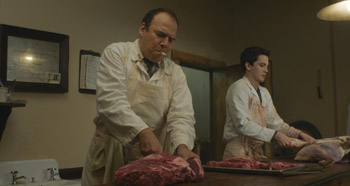 Mount Holyoke College Class of 2015
Mount Holyoke College Class of 2015
Gender Studies Major Archives & Special Collections Assistant
To plumb the mind of Olivia Hutton, Gadon was given selections from French literature, as well as course catalogs detailing the requirements for Mount Holyoke's Department of French Language and Literature from the time. Even Ben Rosenfield, whose character, Bertram Flusser, is preparing to appear in a Winesburg College production of Shakespeare's Twelfth Night, was assigned the work of actually learning the part of Malvolio. 'One of the suggestions that James made early on that was very helpful is to look at the dynamic of the character that I am playing in the movie, and the character my character is playing," recounts Ben Rosenfield. 'I chose Twelfth Night as a text that uncannily allowed Flusser to declare his love while also keeping it a secret. Like Malvolio, Bertram Flusser is made an outcast in a world that wants to regulate and 'normalize" the desires of its characters – and it was an additional uncanny circumstance that the object of Malvolio's desire was also named Olivia in Shakespeare's play!"
Rather than being burdened by their extra studies, the cast and crew welcomed the deep research as a form of collaboration. 'It's been a joy working with James Shamus. He's done so many different things in his career," remarks Gadon. 'But I think the quality in him that I've enjoyed the most is the collaborator, that is his professor side, because at the beginning of the film, he gave us a lot of homework. He would say, 'Read this. Watch that." It made the film feel more like a piece of ours as well, and I think good directors have the confidence to do that. They have the willingness to be open."
Bringing Indignation to Life
One of the unique ways in which James Schamus brought the cast and crew into the creative process was by creating his own version of a shot list. 'When he approached any scene––if it's a scene of people talking around the table or someone walking down the hallway––he basically went through the entirety of film history to see how other people handled that particular setup or that particular type of scene," recalls Bregman. James Schamus and his team came up with a wide array of images, from paintings, drawings, location floorplans and photos from the scout, to stills from films as diverse as Double Indemnity, The Ice Storm, Manhattan, Blue is the Warmest Color, and Gun Crazy to illustrate possible approaches and looks. For cinematographer Christopher Blauvelt, the shot list he and James Schamus crafted was not merely a helpful guide for setting up the camera, but a shared resource for the entire cast and crew that mapped out the creative processes at work in the making of the film.
To establish a visual lens through which to see of the world of Indignation, James Schamus worked with cinematographer Blauvelt, production designer Weinberg, and costume designer Roth to come up with a look that merged the feel of the historical era with the tone of Philip Roth's prose. 'We went back to references for the way in which memory and imagination and desire work in the kind of color that you would have seen and referenced in 1951," explains James Schamus. 'We coordinated that color scheme throughout the entire film." Generally eschewing cinematic references, the filmmakers turned to the way photographers of the period framed their world to guide their look. 'Visually, we were inspired by the color period photography of Ernst Haas, Gordon Parks and Saul Leiter, and by the documentary photography of Esther Bubley, Arthur Rothstein, Russell Lee and John Vachon," recalls Weinberg. The color photos of Gordon Parks, such as his 1956 'Ondria Tanner and Her Grandmother Window-shopping, Mobile, Alabama," were special touchstones for the film's look. 'We were of course always trying to emulate and be inspired by the Kodachrome look of period photographs," remembers Weinberg. 'So blue and red was an important color combination for us, and we deliberated a lot in preproduction over the intensity of the red used in costumes and set-dressing, then testing different reds in our camera test. We ended up settling on a deep rust red that was vibrant but not too primal, and worked well with other colors such as blues and greens."
Shooting for 24 days in locations across New York, Westchester, and Long Island, the production team had to transform a range of modern urban locales into a Fifties Midwestern college campus and a Jewish neighborhood in Newark. The College of New Rochelle became a prime location for capturing Winesburg College. 'The classrooms were barely touched through the years, and the buildings' exteriors were the perfect Collegiate Gothic style that we've encountered so often in our research," notes Weinberg. 'We had to frame out some modern elements and buildings that were later additions, but overall we were able to create a sense of place and a focal point of college life by establishing the quad there." To capture Newark in the 50s, the team traveled to various Queens and Brooklyn neighborhoods, including Ditmas Park, which still has 'has beautiful Victorian homes with period details," explains Weinberg. 'We mostly shot interiors, and converted existing contemporary homes by using vintage 1940s wallpaper, fabrics and furniture." To round out the locations, a number of older churches in Harlem had the gothic architecture necessary to match Winesburg's classic liberal arts college appearance. For the dorm rooms and other interiors, Weinberg and her team built sets to match the specifications of the story on a sound stage and in a Queens storefront.
A Tragic Love Story
'I would say at the core of this film is a love story," exclaims Logan Lerman. When Marcus encounters Olivia in the library one day, his single-minded determination to succeed scholastically is thrown off course. 'She's very troubled and very different from anybody that he grew up with in Newark, New Jersey," explains Logan Lerman. 'I think the kind of love story between Marcus and Olivia is really unique and powerful," explains Sarah Gadon. 'It's not the classic 'Boy meets girl, girl falls in love" tale. It's a little messier than that. And in that sense, it's a little more real." Logan Lerman also found the romance painfully true to life: 'When you're in love with somebody and you know it's just going to end up badly but there's this force that's just draws you together––I think people can relate to that. I think people have been there. I know I have definitely been there."
To capture the truth of this complicated romance James Schamus knew from the start he needed exceptional actors who could convey all the joy, confusion, naiveté, and power of new love. 'There are a few things in Logan that I just knew immediately fit the bill for Marcus Messner," Schamus recounts. 'One is the combination of innocence and intelligence, the earnestness, the curiosity, the sense of exploration, openness and vulnerability. And he brings that to every scene." For Sarah Gadon, Logan Lerman really was Marcus. 'He just wholly embodied this character––all of the bumbling, confusion, uncertainty and charming boyishness that he represents," states Gadon. 'At the same time, he balances his strength of character and his strength of opinion and his smartness with that charming likeability." To match Logan Lerman, James Schamus cast Sarah Gadon, who'd already demonstrated her capacity for complex psychological characters in her work with David Cronenberg and others. Sarah Gadon 'is really at the top of her game," exclaims James Schamus. 'She has a style of acting that we associate with the most natural, most honest, and most real type of American acting, but she also has the technical capacity to deliver anything you need." For both actors, the complexity of their characters' romantic entanglement was part of the film's overall rich texture and philosophical nature. 'When you get something that's so complex, you get to pull back all of these layers and explore all of them," explains Sarah Gadon. 'You piece together all the little pieces of the puzzles, and then there's about a million other ways that you can do the scene. You're kind of dancing in between all these emotions of anger and love and attraction bubbling up between Olivia and Marcus."
A Theatrical Cast
For the supporting cast, the filmmakers found a rich resource in New York's theater community. 'One of the great things about making a lower-budget movie in New York City with some pedigree is that you have access to the greatest actors in the world," notes James Schamus. 'It's incredible the number of Tony nominations that our cast represents, if you go through all the plays and musicals." Working with his longtime collaborator, casting director Avy Kaufman, James Schamus was able to bring a rich texture of talent to both the larger and smaller parts. 'To fill out the world of this movie in 1951 Newark, there is just such a depth and resonance in the faces that we have as well as the skills that those faces bring with them to set," remarks James Schamus. Three of the more seasoned actors"Tracy Letts who plays Dean Caudwell, Linda Edmond who plays Marcus' mother, Esther, and Danny Burstein who plays Marcus' dad, Max––are among the most honoured and revered Broadway actors around. But the younger actors, like Philip Ettinger (Ron Foxman), Pico Alexander (Sonny Cottler), and Noah Robbins (Marty Ziegler) have built up substantial theatrical resumes as well.
Tracy Letts, who plays the imposing Dean Caudwell, welcomed both the caliber of talent in the cast and the dramatic challenge presented by the screenplay. As a writer, whose play August: Osage County won the 2008 Pulitzer Prize for Drama, Tracy Letts immediately appreciated the skill Schamus demonstrated in crafting the screenplay. 'I think the screenplay is great," Tracy Letts exclaims. 'It's very much the book and, at the same time, I think it very much carries James' point of view about the book. I think that's what a good adaptation should do." As an actor, who won the 2013 Tony Award for Best Performance by a Leading Actor in a Play for Who's Afraid of Virginia Woolf?, Letts was attracted to screenplay's powerful language and remarkable structure. One scene in particular, a long exchange between Dean Caudwell and Marcus, especially caught Letts' attention. 'It's 14 pages on the page," explains Letts. 'For somebody who's written screenplays and seen a lot of movies, I can tell you that just doesn't happen very often. It was frankly one of the reasons I wanted to do this film––the challenge of doing that scene." For Letts, the scene provided James Schamus and him an unparalleled opportunity to explore dramatically their characters. 'As an actor, we so rarely get a chance to play an arc over the course of a scene where you start at one place and end at another place, and you've taken a journey over the course of that scene." For James Schamus n, this dramatic marathon with Letts' was a real eye-opener. 'Marcus really clashes with Dean Caudwell in a verbal battle of two opposing views of the world," recalls James Schamus. 'Tracy Letts had about two weeks to prepare and he just went in there and killed it. He's just incredible."
Finding the Emotion in the Edit
In finishing the film, James Schamus worked with editor Andy Marcus and composer Jay Wadley to orchestrate the full emotional range of Indignation. 'James Schamus knows exactly where a character's emotions should be for every scene," states Andy Marcus. 'So when you're putting it together, you find this incredible emotional arc that he's created." While the film could be read as dark, Marcus was challenged to bring out 'a lot of the humour and romance that is in the story." Indeed, often he had to check his own editorial instinct and allow the scenes to unfold on their own terms. When first confronted by the extended scene that takes place in Dean Caudwell's office, Marcus wanted to tighten it up. But working with James Schamus, Andy Marcus ended using 'a lot more wide shots and let it play out" to gather its full dramatic tension.
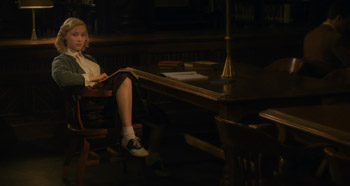 To create the score for Indignation, James Schamus brought on Jay Wadley, a young up-and-coming composer, early on in the process. 'It's been very fun working with Jay Wadley on the score because we started by working together on kind of a tone poem of themes that we thought would give evidence of our approach to melody and instrumentation," explains James Schamus. 'On the one hand, we wanted to avoid schmaltzy music that tells you how to feel. But we didn't want to be afraid of emotion either." In addition, James Schamus and Jay Wadley wanted the score to acknowledge the historical specificity of the film without sounding too much a like period soundtrack. Jay Wadley's solution was to find inspiration in composers, like Morton Feldman and Lou Harrison, whose compositions in the 1950s grappled with issues of form and tone, but left ample space for emotion. Working on the score from the very beginning of pre-production all the way through to the final edit, Jay Wadley wove together a score that was 'emotive with a lot of the depth in the details."
To create the score for Indignation, James Schamus brought on Jay Wadley, a young up-and-coming composer, early on in the process. 'It's been very fun working with Jay Wadley on the score because we started by working together on kind of a tone poem of themes that we thought would give evidence of our approach to melody and instrumentation," explains James Schamus. 'On the one hand, we wanted to avoid schmaltzy music that tells you how to feel. But we didn't want to be afraid of emotion either." In addition, James Schamus and Jay Wadley wanted the score to acknowledge the historical specificity of the film without sounding too much a like period soundtrack. Jay Wadley's solution was to find inspiration in composers, like Morton Feldman and Lou Harrison, whose compositions in the 1950s grappled with issues of form and tone, but left ample space for emotion. Working on the score from the very beginning of pre-production all the way through to the final edit, Jay Wadley wove together a score that was 'emotive with a lot of the depth in the details."
One of the highlights of working on the score for James Schamus and Jay Wadley was their work on an original song for the film, for which James Schamus wrote the lyrics and Jay Wadley the music. Called 'Is It Love," the song is meant to sound like a radio hit from the era, and plays on the car radio as Marcus and Olivia drive on their way to a lover's lane in a nearby cemetery. The great jazz vocalist Jane Monheit came in to record the song on the last day of the scoring sessions with a large ensemble. 'The experience," says James Schamus, 'was incredible. After three days of recording Jay's intensely emotional score, the musicians suddenly found themselves playing this wonderfully lush, romantic tune that seemed to come right out of the American Songbook, with Jane's voice soaring above the orchestra. After the first take, everyone just started laughing and applauding."
The following are links to the end credit cue for the movie as well as to the song, 'Is it Love": "End cue"; 'Is it Love"
'Know Your Meat," produced by the Office of Price Administration of San Francisco a released in 1945.
The OPA summarizes the video as follows: 'On the inspection, grading, and butchering of beef. Beef is inspected by Bureau of Animal Industry agents and graded Meat Inspection Branch agent. Explains the grading system (marbling, colouring, and, conformation) Describes, in detail, the butchering of a beef in accordance with OPA regulations Explains that meat, displayed in a retail store, must be marked as to grade, price, and ration points required."
The episode can be watched in its entirety in the following link: 'Know Your Meat."
Still from Episode 391 of 'The Big Picture," a television program produced by the US Army in the 1950s and 60s. This particular episode chronicles the school life of Kenneth Miller, Cornell '54, a member of the ROTC. It follows him through classes, daily life on campus, training and drilling, and dating.
'How the United States finds and trains men of leadership ability on whom the nation can depend in time of mobilization is the subject for this presentation. As explained in narration form, many of the officers come from ROTC--which is part of the curriculum of many schools and colleges throughout the country. ROTC is an integral part of college life for many students like "Hank" Miller, Cornell '54, about whom this picture has been written. Skillfully photographed on the campus of Cornell University and on the training field at Ft. Bragg, North Carolina, "Graduate--ROTC" is a very sincere treatment of a subject that otherwise might become dull on motion picture film. It moves from classroom to football field, from parade ground to an Army Missile Command. Lieutenant Henry "Hank" Miller is shown as a member of a team of youthful missile men whose mission is the defense of the United States. His role is one that calls for active leadership that began with training several years ago when he was a freshman student at Cornell University. Without over-emphasizing the mission of ROTC, the viewer is left with a very clear-cut impression that without men trained like Lt. Miller, this nation would lose an advantage impossible to measure - that of having capable military leaders for whatever eventualities may arise in the troubled world of today."
James Schamus worked on the screenplay for Indignation during his last years at Focus Features, but hadn't seriously considered directing it. 'You write a screenplay, and you have a choice," explains James Schamus, 'You could direct it, or Ang Lee could direct it. That's not much of a choice." But when his tenure at Focus ended, James Schamus began to seriously entertain the possibility of directing Indignation himself. 'Finally having the time and the freedom, untethered from my other jobs," James Schamus jokes, 'I considered whether or not this is an experience I'd like to inflict on my friends and relatives." And Indignation was the perfect project for him for a variety of reasons. Not only had he envisioned every scene and sounded out every line in writing the screenplay, but he connected to the story personally. 'To a certain extent, I know Marcus Messner, the character [in Indignation] very well," acknowledges James Schamus. 'There's a little of him in me. There's a little of him in any good Jewish boy who went on to try to do well in school."
To get started, James Schamus approached Anthony Bregman, a producer with whom he'd worked both at Good Machine and Focus Features, about coming on board. James Schamus' screenplay struck a chord with Anthony Bregman as well. 'I felt like here was something that could have been taken from my own life," remembers Anthony Bregman. 'And that's the kind of connection I always look for in a script." James Schamus' adaptation 'touched on so many aspects of what I felt as a young person and how I approach the world today," explains Anthony Bregman. 'It's a tragic love story. It's a story of youthful rebellion. It's a grand philosophical story of existence about the things we do that determine our fate. It's a moving story, a funny story and a very profound one."
Philip Roth, Allen Ginsburg, Sylvia Plath
And how Death is that remedy all singers dream of, sing, remember, prophesy as in the Hebrew Anthem, or the Buddhist Book of Answers"and my own imagination of a withered leaf"at dawn" Dreaming back thru life, Your time"and mine accelerating toward Apocalypse… Allen Ginsberg, 'Kaddish"
I love people. Everybody. I love them, I think, as a stamp collector loves his collection. Every story, every incident, every bit of conversation is raw material for me. My love's not impersonal yet not wholly subjective either. I would love to be everyone, a cripple, a dying man, a whore, and then come back to write about my thoughts, my emotions, as that person. But I am not omniscient. I have to live my life, and it's the only one I'll ever have.
Sylvia Plath, The Journals of Sylvia Plath (July 1950 – July 1953)
In 2008, Philip Roth published his 29th novel, Indignation, a story that returned him to his own youth, growing up in Newark before attending a small liberal arts college. One of America's most honored and accomplished writers––having twice won the National Book Award and the National Book Critics Circle award, as well as having received a Pulitzer Prize––Roth was 75 years old when he turned back to imagine this period of his youth. 'Indignation may not be the best known of Philip Roth's novels, but in some ways that's a real blessing," notes writer/director James Schamus. 'It's more of a chamber piece that captures a specific moment in a young man's life." While details of the story roughly mirror Philip Roth's life, with Winesburg College serving as a stand in for Pennsylvania's Bucknell University, Roth's alma mater, the story isn't exactly autobiographical. But the world of ideas that Roth weaves together to create Indignation nevertheless feels very personal and profound. Connecting to the novel's reservoir of 'empathy and elegy," James Schamus found that in Indignation, Roth 'was reaching down into something that really resonated with me."
In adapting the book for the screen, James Schamus turned to two other literary figures of the late 20th century, Sylvia Plath and Allen Ginsberg, for inspiration. While both were contemporaries of Roth, neither one was directly connected to his intellectual circle. Ginsberg, 8 years Philip Roth's senior, was born in Roth's hometown of Newark, before his family moved to nearby Paterson. 'You don't think of Philip Roth and Allen Ginsberg as being from the same sphere," explains James Schamus, 'but both were very ambitious young Jewish kids from New Jersey from essentially working class or middle class backgrounds who found their path into American letters in different ways." Their paths did cross, however, in one unexpected way. Ginsberg's aunt, Hannah Litzky, who taught English at Weequahic High School, had Roth as a student in her class. While Allen Ginsberg's beat poetry and queer sensibility might seem out of place on Winesburg's staid campus, James Schamus found several ways to weave him into the story. For Schamus, the Kaddish sung at the film's beginning for the Jonah Greenberg is a nod to Ginsberg's 1961 elegy, 'Kaddish," dedicated to his mother, Naomi Ginsberg. And in the character of Bertram Flusser, one of Marcus's two roommates, one finds the embryonic spirit of the sexual revolution that Ginsberg would be instrumental in igniting in the next decade. 'Flusser's own heartbreak mirrors Marcus's," says James Schamus, 'and Marcus's blindness to it makes it all the more moving to me. I'd like to believe Flusser would, in the following years, discover Ginsberg and the Beat Poets, and find something of himself there."
Although Sylvia Plath and Philip Roth travelled in different circles, James Schamus imagines an aesthetic, if not actual, bond between the two. 'I don't know if Philip Roth was reading her journals, but for me the character Olivia Hutton has a lot to do with Sylvia Plath," suggests James Schamus. Since The Unabridged Journals of Sylvia Plath were first published in 2000, eight years before Roth published his novel Indignation, such a connection is not at all impossible. As James Schamus and Sarah Gadon developed the character of Olivia Hutton, the figure of Sylvia Plath helped illuminate the character's consciousness and the times in which she lived. 'The thing that I always loved about Sylvia Plath's writing as a young woman is that you're able to get into the head of the feminine psyche––how much strength there is but simultaneously, there is all this vulnerability," explains Gadon. 'They kind of coexist in this weird world of being objectified versus having your own strength of opinions, and I think you see all of that at play in Olivia." As James Schamus points out, the character of Olivia spent her freshman year at Mt. Holyoke College, just down the road from where Sylvia Plath was spending her freshman year at Smith College. 'Reading Sylvia Plath's journal entries about that year really helped me understand what Olivia might have been going through," says James Schamus, 'even if she's a completely different character."
Philip Roth's 1950s
To create Philip Roth's vision of 1951, the filmmakers needed to understand that world inside out. 'James is first and foremost a scholar and a university professor, so research is very important to him and is almost second nature," noted production designer Inbal Weinberg. 'He was very methodical and meticulous with period details, which in turn made us all look deeper at how people lived in the 1950s." In preproduction, the team created a massive historical archive detailing nearly every aspect of life in the film, from how people dressed to what a French cafe might have on its menu. 'For Winesburg College, we looked through many college archives and found period photographs of classrooms, quads and dorms (including Philip Roth's actual university, Bucknell)," recalls Weinberg. 'We purchased 1950s yearbooks and personal scrapbooks on eBay and used them as our bible. They provided us with not only an understanding of the social system, looks, and fashion, but also a reference for fonts and graphics to use in any college posters, pamphlets, and booklets we created." For Newark, the filmmakers turned both to Roth's own literary work and historical archives, recording and examining every detail, from the art of Kosher butchering to the price of meat at the time. 'The most lively debate was over the Shiva food spread," recalls Weinberg. 'I had to personally delve into the history of Jello and the difficult question of whether it was considered Kosher or not." (The final answer is, 'it depends." But the discovery of a Hebrew Jello ad from the time and discussion of Jello in Roth's Portnoy's Complaint provided enough evidence to vote for its inclusion on the table.)
Costume designer Amy Roth's extensive research into the wardrobes of both college kids and Newark's Jewish community gave her new insight into the history of fashion. Besides poring over old fashion magazines, from Seventeen to Bazaar, and archival images detailing the use of plaid and floral patterns, Philip Roth scoured vintage houses for costumes for both the boy and girl students. 'The girls wore skirts and blouses that button down the back. The boys were in button front shirts and ties and beautifully tailored jackets," recalls Philip Roth. 'The fashion of the time was very inspirational. Seeing things like detail and craftsmanship, I'm just amazed by how well everybody dressed." Philip Roth also sought to provide character and story with her costumes. Taking her cue from another Philip Roth story, Philip Roth dressed Logan Lerman in a way that showed off both his naiveté and will to succeed. 'When we see Logan for the first time as Marcus, standing on his college campus with his suitcase, he's a little overdressed," explains James Schamus. 'His bucks aren't fashionably kicked in. They are brand new and white and sticking out of his brand-new suit."
In addition to capturing the collegiate look at Winesburg, the production design and costumes had to bring 1950s Newark to life. 'It's not just the costumes that have an effect," explained Linda Emond, who plays Marcus' mother Esther. 'It's hair, makeup, and the sets we're working on, that definitely take you to another time." While Danny Burstein, who plays Marcus' dad, Max, did extensive research on his character through reading and visiting butcher shops, he also credits costume designer Amy Roth with transporting him to 1951. Burstein remembers thinking while on set, 'I feel like myself, then I look in the mirror, and I think, -Holy cow! Who the hell is that?' It was that transformative."
While much of the production team's extensive research can be seen overtly on screen, some of it shows up in more complex and subtle ways. When Olivia pens a letter to Marcus, for example, the shape of her script mimes that of Sylvia Plath's. On the other hand, Marcus's cursive line when writing Olivia imitates the scrawl of soldiers writing home from the Korean War. Even something so innocuous as a phonograph LP can underscore the complicated geo-political situation of the time. When Marcus' roommate Flusser puts on a record of Paul Robeson singing 'Chee Lai," he opens up a revolutionary can of worms. The song, also entitled 'The March of the Volunteers," was recorded in both English and Chinese by Robeson in 1941. Eight years later, it was adopted as the National Anthem of the People's Republic of China and would no doubt have been a rallying hymn sung by the Chinese forces on the other side of the Korean War. In fact the title of Philip Roth's novel, Indignation, comes from a contemporaneous translation of the song.
The Inner Lives of Fifties College Students
While the extensive look books and research dossiers for the film provided a guide to how things should look, the filmmakers pushed deeper to comprehend the era's psyche as well. 'There is a sense of uncertainty from a younger generation that has no real references to define itself vis-à-vis the prior generation and what's coming next," explains James Schamus. 'It was a real limbo time after World War II. The sexual revolution was yet to come, anti-communism and the Blacklist were in the news, and teenage culture as we know it was just around the corner. Meanwhile there's another massive war going overseas. Our characters are really struggling with how to find themselves in that landscape."
For the actors, comprehending their characters' inner psyches often meant exploring their intellectual lives as students. To help them get into the heads of 1951 college students, the filmmakers compiled course descriptions and syllabi used at Bucknell University (Roth's alma mater) and Mount Holyoke (Hutton's previous school). 'Marcus is so much smarter than I am," jokes Logan Lerman. 'In order to understand what is he saying, I really ended up having to do a lot of research." Logan Lerman joined James Schamus in New York City a month before filming started to immerse himself in Marcus' physical and mental world. In addition to studying Bertrand Russell's Why I Am Not a Christian, Logan Lerman read a wide range of material, including political science, philosophy and poetry. He even got the chance to skim the actual textbooks used by students of the time. 'It was a really great experience collaborating with James Schamus," relates Logan Lerman. 'He gave me lot of great pieces of material that would help me get into the mind of my character and we just would have lots of conversations."
 Mount Holyoke College Class of 2015
Mount Holyoke College Class of 2015 Gender Studies Major Archives & Special Collections Assistant
To plumb the mind of Olivia Hutton, Gadon was given selections from French literature, as well as course catalogs detailing the requirements for Mount Holyoke's Department of French Language and Literature from the time. Even Ben Rosenfield, whose character, Bertram Flusser, is preparing to appear in a Winesburg College production of Shakespeare's Twelfth Night, was assigned the work of actually learning the part of Malvolio. 'One of the suggestions that James made early on that was very helpful is to look at the dynamic of the character that I am playing in the movie, and the character my character is playing," recounts Ben Rosenfield. 'I chose Twelfth Night as a text that uncannily allowed Flusser to declare his love while also keeping it a secret. Like Malvolio, Bertram Flusser is made an outcast in a world that wants to regulate and 'normalize" the desires of its characters – and it was an additional uncanny circumstance that the object of Malvolio's desire was also named Olivia in Shakespeare's play!"
Rather than being burdened by their extra studies, the cast and crew welcomed the deep research as a form of collaboration. 'It's been a joy working with James Shamus. He's done so many different things in his career," remarks Gadon. 'But I think the quality in him that I've enjoyed the most is the collaborator, that is his professor side, because at the beginning of the film, he gave us a lot of homework. He would say, 'Read this. Watch that." It made the film feel more like a piece of ours as well, and I think good directors have the confidence to do that. They have the willingness to be open."
Bringing Indignation to Life
One of the unique ways in which James Schamus brought the cast and crew into the creative process was by creating his own version of a shot list. 'When he approached any scene––if it's a scene of people talking around the table or someone walking down the hallway––he basically went through the entirety of film history to see how other people handled that particular setup or that particular type of scene," recalls Bregman. James Schamus and his team came up with a wide array of images, from paintings, drawings, location floorplans and photos from the scout, to stills from films as diverse as Double Indemnity, The Ice Storm, Manhattan, Blue is the Warmest Color, and Gun Crazy to illustrate possible approaches and looks. For cinematographer Christopher Blauvelt, the shot list he and James Schamus crafted was not merely a helpful guide for setting up the camera, but a shared resource for the entire cast and crew that mapped out the creative processes at work in the making of the film.
To establish a visual lens through which to see of the world of Indignation, James Schamus worked with cinematographer Blauvelt, production designer Weinberg, and costume designer Roth to come up with a look that merged the feel of the historical era with the tone of Philip Roth's prose. 'We went back to references for the way in which memory and imagination and desire work in the kind of color that you would have seen and referenced in 1951," explains James Schamus. 'We coordinated that color scheme throughout the entire film." Generally eschewing cinematic references, the filmmakers turned to the way photographers of the period framed their world to guide their look. 'Visually, we were inspired by the color period photography of Ernst Haas, Gordon Parks and Saul Leiter, and by the documentary photography of Esther Bubley, Arthur Rothstein, Russell Lee and John Vachon," recalls Weinberg. The color photos of Gordon Parks, such as his 1956 'Ondria Tanner and Her Grandmother Window-shopping, Mobile, Alabama," were special touchstones for the film's look. 'We were of course always trying to emulate and be inspired by the Kodachrome look of period photographs," remembers Weinberg. 'So blue and red was an important color combination for us, and we deliberated a lot in preproduction over the intensity of the red used in costumes and set-dressing, then testing different reds in our camera test. We ended up settling on a deep rust red that was vibrant but not too primal, and worked well with other colors such as blues and greens."
Shooting for 24 days in locations across New York, Westchester, and Long Island, the production team had to transform a range of modern urban locales into a Fifties Midwestern college campus and a Jewish neighborhood in Newark. The College of New Rochelle became a prime location for capturing Winesburg College. 'The classrooms were barely touched through the years, and the buildings' exteriors were the perfect Collegiate Gothic style that we've encountered so often in our research," notes Weinberg. 'We had to frame out some modern elements and buildings that were later additions, but overall we were able to create a sense of place and a focal point of college life by establishing the quad there." To capture Newark in the 50s, the team traveled to various Queens and Brooklyn neighborhoods, including Ditmas Park, which still has 'has beautiful Victorian homes with period details," explains Weinberg. 'We mostly shot interiors, and converted existing contemporary homes by using vintage 1940s wallpaper, fabrics and furniture." To round out the locations, a number of older churches in Harlem had the gothic architecture necessary to match Winesburg's classic liberal arts college appearance. For the dorm rooms and other interiors, Weinberg and her team built sets to match the specifications of the story on a sound stage and in a Queens storefront.
A Tragic Love Story
'I would say at the core of this film is a love story," exclaims Logan Lerman. When Marcus encounters Olivia in the library one day, his single-minded determination to succeed scholastically is thrown off course. 'She's very troubled and very different from anybody that he grew up with in Newark, New Jersey," explains Logan Lerman. 'I think the kind of love story between Marcus and Olivia is really unique and powerful," explains Sarah Gadon. 'It's not the classic 'Boy meets girl, girl falls in love" tale. It's a little messier than that. And in that sense, it's a little more real." Logan Lerman also found the romance painfully true to life: 'When you're in love with somebody and you know it's just going to end up badly but there's this force that's just draws you together––I think people can relate to that. I think people have been there. I know I have definitely been there."
To capture the truth of this complicated romance James Schamus knew from the start he needed exceptional actors who could convey all the joy, confusion, naiveté, and power of new love. 'There are a few things in Logan that I just knew immediately fit the bill for Marcus Messner," Schamus recounts. 'One is the combination of innocence and intelligence, the earnestness, the curiosity, the sense of exploration, openness and vulnerability. And he brings that to every scene." For Sarah Gadon, Logan Lerman really was Marcus. 'He just wholly embodied this character––all of the bumbling, confusion, uncertainty and charming boyishness that he represents," states Gadon. 'At the same time, he balances his strength of character and his strength of opinion and his smartness with that charming likeability." To match Logan Lerman, James Schamus cast Sarah Gadon, who'd already demonstrated her capacity for complex psychological characters in her work with David Cronenberg and others. Sarah Gadon 'is really at the top of her game," exclaims James Schamus. 'She has a style of acting that we associate with the most natural, most honest, and most real type of American acting, but she also has the technical capacity to deliver anything you need." For both actors, the complexity of their characters' romantic entanglement was part of the film's overall rich texture and philosophical nature. 'When you get something that's so complex, you get to pull back all of these layers and explore all of them," explains Sarah Gadon. 'You piece together all the little pieces of the puzzles, and then there's about a million other ways that you can do the scene. You're kind of dancing in between all these emotions of anger and love and attraction bubbling up between Olivia and Marcus."
A Theatrical Cast
For the supporting cast, the filmmakers found a rich resource in New York's theater community. 'One of the great things about making a lower-budget movie in New York City with some pedigree is that you have access to the greatest actors in the world," notes James Schamus. 'It's incredible the number of Tony nominations that our cast represents, if you go through all the plays and musicals." Working with his longtime collaborator, casting director Avy Kaufman, James Schamus was able to bring a rich texture of talent to both the larger and smaller parts. 'To fill out the world of this movie in 1951 Newark, there is just such a depth and resonance in the faces that we have as well as the skills that those faces bring with them to set," remarks James Schamus. Three of the more seasoned actors"Tracy Letts who plays Dean Caudwell, Linda Edmond who plays Marcus' mother, Esther, and Danny Burstein who plays Marcus' dad, Max––are among the most honoured and revered Broadway actors around. But the younger actors, like Philip Ettinger (Ron Foxman), Pico Alexander (Sonny Cottler), and Noah Robbins (Marty Ziegler) have built up substantial theatrical resumes as well.
Tracy Letts, who plays the imposing Dean Caudwell, welcomed both the caliber of talent in the cast and the dramatic challenge presented by the screenplay. As a writer, whose play August: Osage County won the 2008 Pulitzer Prize for Drama, Tracy Letts immediately appreciated the skill Schamus demonstrated in crafting the screenplay. 'I think the screenplay is great," Tracy Letts exclaims. 'It's very much the book and, at the same time, I think it very much carries James' point of view about the book. I think that's what a good adaptation should do." As an actor, who won the 2013 Tony Award for Best Performance by a Leading Actor in a Play for Who's Afraid of Virginia Woolf?, Letts was attracted to screenplay's powerful language and remarkable structure. One scene in particular, a long exchange between Dean Caudwell and Marcus, especially caught Letts' attention. 'It's 14 pages on the page," explains Letts. 'For somebody who's written screenplays and seen a lot of movies, I can tell you that just doesn't happen very often. It was frankly one of the reasons I wanted to do this film––the challenge of doing that scene." For Letts, the scene provided James Schamus and him an unparalleled opportunity to explore dramatically their characters. 'As an actor, we so rarely get a chance to play an arc over the course of a scene where you start at one place and end at another place, and you've taken a journey over the course of that scene." For James Schamus n, this dramatic marathon with Letts' was a real eye-opener. 'Marcus really clashes with Dean Caudwell in a verbal battle of two opposing views of the world," recalls James Schamus. 'Tracy Letts had about two weeks to prepare and he just went in there and killed it. He's just incredible."
Finding the Emotion in the Edit
In finishing the film, James Schamus worked with editor Andy Marcus and composer Jay Wadley to orchestrate the full emotional range of Indignation. 'James Schamus knows exactly where a character's emotions should be for every scene," states Andy Marcus. 'So when you're putting it together, you find this incredible emotional arc that he's created." While the film could be read as dark, Marcus was challenged to bring out 'a lot of the humour and romance that is in the story." Indeed, often he had to check his own editorial instinct and allow the scenes to unfold on their own terms. When first confronted by the extended scene that takes place in Dean Caudwell's office, Marcus wanted to tighten it up. But working with James Schamus, Andy Marcus ended using 'a lot more wide shots and let it play out" to gather its full dramatic tension.
 To create the score for Indignation, James Schamus brought on Jay Wadley, a young up-and-coming composer, early on in the process. 'It's been very fun working with Jay Wadley on the score because we started by working together on kind of a tone poem of themes that we thought would give evidence of our approach to melody and instrumentation," explains James Schamus. 'On the one hand, we wanted to avoid schmaltzy music that tells you how to feel. But we didn't want to be afraid of emotion either." In addition, James Schamus and Jay Wadley wanted the score to acknowledge the historical specificity of the film without sounding too much a like period soundtrack. Jay Wadley's solution was to find inspiration in composers, like Morton Feldman and Lou Harrison, whose compositions in the 1950s grappled with issues of form and tone, but left ample space for emotion. Working on the score from the very beginning of pre-production all the way through to the final edit, Jay Wadley wove together a score that was 'emotive with a lot of the depth in the details."
To create the score for Indignation, James Schamus brought on Jay Wadley, a young up-and-coming composer, early on in the process. 'It's been very fun working with Jay Wadley on the score because we started by working together on kind of a tone poem of themes that we thought would give evidence of our approach to melody and instrumentation," explains James Schamus. 'On the one hand, we wanted to avoid schmaltzy music that tells you how to feel. But we didn't want to be afraid of emotion either." In addition, James Schamus and Jay Wadley wanted the score to acknowledge the historical specificity of the film without sounding too much a like period soundtrack. Jay Wadley's solution was to find inspiration in composers, like Morton Feldman and Lou Harrison, whose compositions in the 1950s grappled with issues of form and tone, but left ample space for emotion. Working on the score from the very beginning of pre-production all the way through to the final edit, Jay Wadley wove together a score that was 'emotive with a lot of the depth in the details." One of the highlights of working on the score for James Schamus and Jay Wadley was their work on an original song for the film, for which James Schamus wrote the lyrics and Jay Wadley the music. Called 'Is It Love," the song is meant to sound like a radio hit from the era, and plays on the car radio as Marcus and Olivia drive on their way to a lover's lane in a nearby cemetery. The great jazz vocalist Jane Monheit came in to record the song on the last day of the scoring sessions with a large ensemble. 'The experience," says James Schamus, 'was incredible. After three days of recording Jay's intensely emotional score, the musicians suddenly found themselves playing this wonderfully lush, romantic tune that seemed to come right out of the American Songbook, with Jane's voice soaring above the orchestra. After the first take, everyone just started laughing and applauding."
The following are links to the end credit cue for the movie as well as to the song, 'Is it Love": "End cue"; 'Is it Love"
'Know Your Meat," produced by the Office of Price Administration of San Francisco a released in 1945.
The OPA summarizes the video as follows: 'On the inspection, grading, and butchering of beef. Beef is inspected by Bureau of Animal Industry agents and graded Meat Inspection Branch agent. Explains the grading system (marbling, colouring, and, conformation) Describes, in detail, the butchering of a beef in accordance with OPA regulations Explains that meat, displayed in a retail store, must be marked as to grade, price, and ration points required."
The episode can be watched in its entirety in the following link: 'Know Your Meat."
Still from Episode 391 of 'The Big Picture," a television program produced by the US Army in the 1950s and 60s. This particular episode chronicles the school life of Kenneth Miller, Cornell '54, a member of the ROTC. It follows him through classes, daily life on campus, training and drilling, and dating.
'How the United States finds and trains men of leadership ability on whom the nation can depend in time of mobilization is the subject for this presentation. As explained in narration form, many of the officers come from ROTC--which is part of the curriculum of many schools and colleges throughout the country. ROTC is an integral part of college life for many students like "Hank" Miller, Cornell '54, about whom this picture has been written. Skillfully photographed on the campus of Cornell University and on the training field at Ft. Bragg, North Carolina, "Graduate--ROTC" is a very sincere treatment of a subject that otherwise might become dull on motion picture film. It moves from classroom to football field, from parade ground to an Army Missile Command. Lieutenant Henry "Hank" Miller is shown as a member of a team of youthful missile men whose mission is the defense of the United States. His role is one that calls for active leadership that began with training several years ago when he was a freshman student at Cornell University. Without over-emphasizing the mission of ROTC, the viewer is left with a very clear-cut impression that without men trained like Lt. Miller, this nation would lose an advantage impossible to measure - that of having capable military leaders for whatever eventualities may arise in the troubled world of today."
Indignation
Release Date: August 18th, 2016
Release Date: August 18th, 2016
Have You Seen This?
MORE



